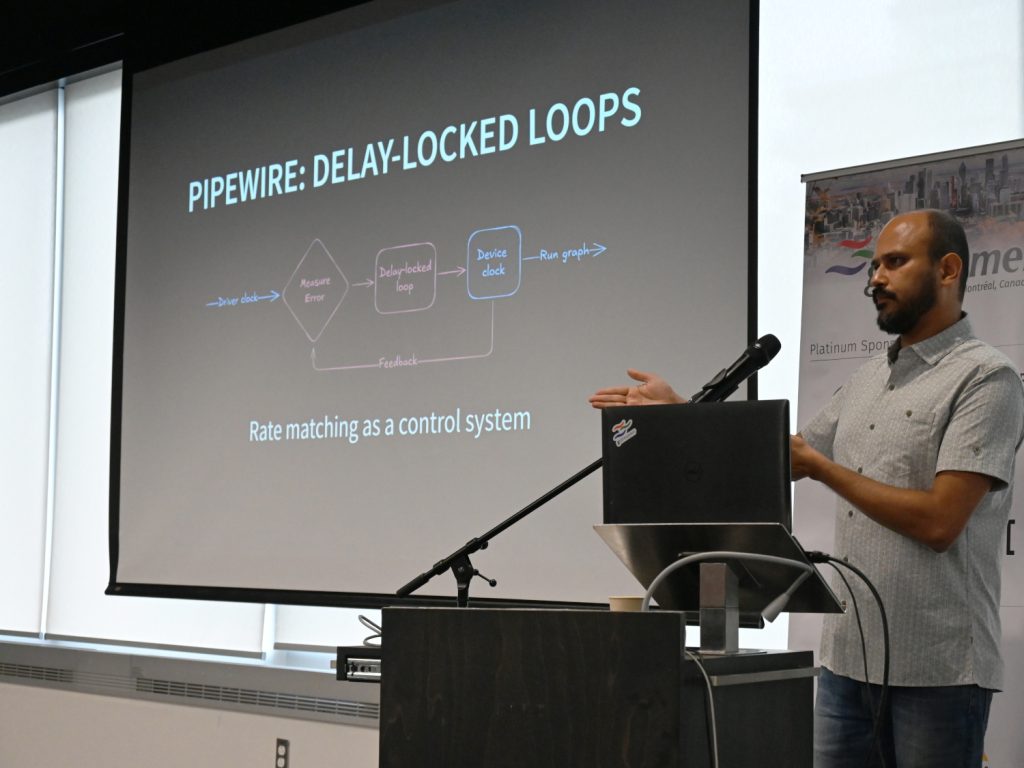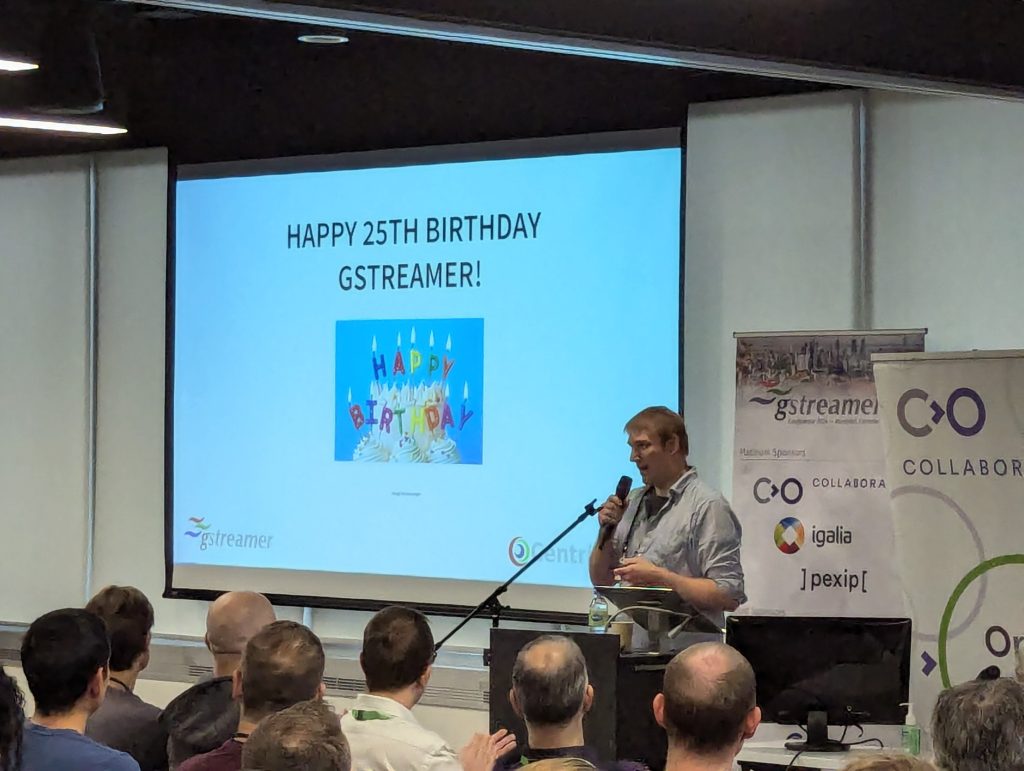All of us at Asymptotic are back home from the exciting week at GStreamer Conference 2024 in Montréal, Canada last month. It was great to hang out with the community and see all the great work going on in the GStreamer ecosystem.
There were some visa-related adventures leading up to the conference, but thanks to the organising team (shoutout to Mark Filion and Tim-Philipp Müller), everything was sorted out in time and Sanchayan and Taruntej were able to make it.
This conference was also special because this year marks the 25th anniversary of the GStreamer project!
Sanchayan spoke about his work with the various QUIC elements in GStreamer. We already have the quinnquicsrc and quinquicsink upstream, with a couple of plugins to allow (de)multiplexing of raw streams as well as an implementation or RTP-over-QUIC (RoQ). We’ve also started work on Media-over-QUIC (MoQ) elements.
This has been a fun challenge for us, as we’re looking to build out a general-purpose toolkit for building QUIC application-layer protocols in GStreamer. Watch this space for more updates as we build out more functionality, especially around MoQ.
Clock Rate Matching in GStreamer & PipeWire (video)

My talk was about an interesting corner of GStreamer, namely clock rate matching. This is a part of live pipelines that is often taken for granted, so I wanted to give folks a peek under the hood.
The idea of doing this talk was was born out of some recent work we did to allow splitting up the graph clock in PipeWire from the PTP clock when sending AES67 streams on the network. I found the contrast between the PipeWire and GStreamer approaches thought-provoking, and wanted to share that with the community.
GStreamer for Real-Time Audio on Windows (video)
Next, Taruntej dove into how we optimised our usage of GStreamer in a real-time audio application on Windows. We had some pretty tight performance requirements for this project, and Taruntej spent a lot of time profiling and tuning the pipeline to meet them. He shared some of the lessons learned and the tools he used to get there.
Simplifying HLS playlist generation in GStreamer (video)
Sanchayan also walked us through the work he’s been doing to simplify HLS (HTTP Live Streaming) multivariant playlist generation. This should be a nice feature to round out GStreamer’s already strong support for generating HLS streams. We are also exploring the possibility of reusing the same code for generating DASH (Dynamic Adaptive Streaming over HTTP) manifests.
Hackfest
As usual, the conference was followed by a two-day hackfest. We worked on a few interesting problems:
-
Sanchayan addressed some feedback on the QUIC muxer elements, and then investigated extending the HLS elements for SCTE-35 marker insertion and DASH support
-
Taruntej worked on improvements to the
threadshareelements, specifically to bring somets-udpsrcelement features in line withudpsrc -
I spent some time reviewing a long-pending merge request to add soft-seeking support to the AWS S3 sink (so that it might be possible to upload seekable MP4s, for example, directly to S3). I also had a very productive conversation with George Kiagiadakis about how we should improve the PipeWire GStreamer elements (more on this soon!)
All in all, it was a great time, and I’m looking forward to the spring hackfest and conference in the the latter part next year!



